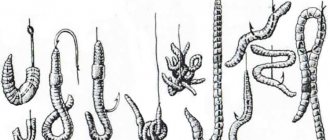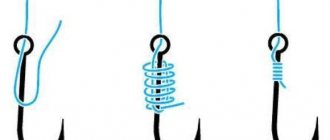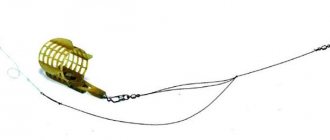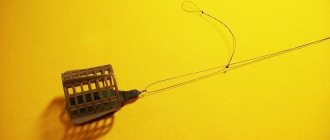Once upon a time, back in Soviet times, high-quality fishing equipment was in short supply - even imported fishing line or hooks were obtained through connections, paying exorbitant prices. Nowadays it’s enough just to go to a specialized store and your eyes will run wide from the abundance of offers. In this case, choosing a hook for specific fishing conditions turns into a super task, because even sellers sometimes cannot give intelligible professional advice. You have to rely on the manufacturer's information and your own knowledge.
Today we have set a task - to help you gain this knowledge in the simplest possible way, bypassing the long path of trial and error. We will tell you what these small but important elements of equipment are, and help you select options depending on fishing conditions, fishing method, type of intended prey and bait. Moreover, we will teach you how to properly store and improve your hooks so that they last as long as possible. There is nothing more disappointing than missing a fish due to imperfect equipment, so let's try to avoid this trouble!
The importance of proper selection
Unfortunately, not all fishermen, especially in the early stages, attach due importance to the selection of this small but super-important element of equipment. The main principle is that it fits in the fish’s mouth and the bait does not slip off, and the rest is details. However, this is catastrophically not enough for successful fishing!
This bait provides a rich catch even with a bad bite! More details
Take a closer look at the products of fishing tackle manufacturers: you will see that hooks are differentiated by size, shape and even color. You will see a variety of single, double, triple elements, with different fore-end lengths, with and without barbs, with blades or rings, all kinds of configurations and color schemes.
Honest manufacturers indicate the main characteristics of hooks on the factory packaging, and they correspond to reality. Let us assume that we are looking at really high-quality products, made of steel with a reliable coating and good sharpening.
However, the angler must take into account other factors that affect fishing performance:
- Fish activity . The less active the fish, the more wary it is of all sorts of unusual things. This means that a large and shiny hook can scare it away from the bait.
- Trophy weight . Naturally, carp and bleak are caught on hooks of different sizes: the miniature version will not withstand the pressure of the giant.
- Type of bait . For plant baits, smaller options are usually used than for animals (with the exception of ultra-delicate bloodworms).
Now let’s talk about the nuances of choosing hooks in as much detail as possible, and in a language that a novice fisherman can understand.
Sizes and classification of fishing hooks
Along with domestic products, fishing stores have a wide range of Finnish, Japanese, Korean and Chinese manufacturers. Moreover, the numbering of domestic and imported samples is completely different.
The numbering of domestic hooks includes the distance from the tip of the hook to its shank
, therefore, everything is very simple here.
The international numbering system is slightly different: the smaller the fishhook, the higher the number it has.
It should be borne in mind that the thickness of the hook is not an indicator of its quality. In this case, it all depends on what alloy the hook is made of. Companies such as Cobra, Garakatsu, Mustad, Hayabasa, Katana, Owner, Siran, Kosadake use only high-quality alloys in the production of hooks, which is why hooks from such companies are valued.
Elements of a fishing hook
Let's get acquainted with the main elements that are present in any model:
- Head . In this case, we are talking about the place of attachment to the fishing line. The head can be made either in the form of a loop or in the form of a flat spatula. The first option can be recommended to novice fishermen, since tying a model with a loop is objectively easier. However, experienced fishermen usually prefer options with spatulas - it is believed that the loop frays the line somewhat faster, and the risk of the ring bending should not be discounted. There are models where there is no pronounced head at all - the fishing line is attached along a groove marked on the fore-end.
- The forend is a long straight section running down from the head. For animal baits, options with a long fore-end are usually used. This is especially noticeable with live bait hooks.
- Prying . Curved section after the fore-end. It can have a round, semi-round or angular shape. In doubles and tees (“anchors”), with a common forend, there are two or three hooks, respectively. A distinction is made between the “back of the head” and the “forehead” of the hook - the “forehead” smoothly turns into a sting.
- Sting . The sting consists of a point itself, designed to pierce the lip of a fish, as well as a barb that holds the bait and prevents the prey from leaving. There are models without barbs, but it is rational to use them only for catching the smallest and weakest specimens. Naturally, hooking should follow immediately after the bite. The sting can be bent to the side, towards the fore-end or outwards.
How not to get confused when choosing fishing hooks
It’s unlikely that anyone will be surprised by the variety of products for fishing nowadays, and fishing hooks are no exception. Whatever types, models and sizes are currently not on sale - there are products for every taste.
Many anglers are confused when choosing the right hook; manufacturers also add additional confusion by labeling their products in completely different ways. Let's try to understand the wide range of sizes of the main element of fishing equipment.
Classification by size
There are two main approaches to the classification of fishing hooks: Russian and international. However, such eminent manufacturers of fishing tackle as the Japanese and Finns could not help but contribute to this parameter, which creates even more confusion when choosing an option by size.
The simplest and most intuitive is the domestic system, which entered fishing life back in Soviet times. It is based on a basic value - the width of the hook from the shank to the sting. It starts from 2 and ends at 16 mm.
More popular in the world is the so-called “Redditch” scale, named after the English town where, from time immemorial, accessories for aristocratic fly fishing were produced. The numerical values of this scale are closely related to the size of fly baits for fly fishing. There is no obvious connection with the metric system. Another nuance: the numbering goes from 24 to 1, and the higher the number, the smaller the hook.
Even more confusion is created when choosing hooks from Japanese and Finnish manufacturers. The Japanese classification is close to the international one: it is also inverse, with a discrepancy of two units. But the Finns showed even greater ingenuity here: they acted almost like the Japanese, borrowing the system from the British, but with some nuances.
Numbering of hooks by size and shank length
Every newbie to fishing should be familiar with the standard grading of fish hooks. The formula contained on the packaging is the encrypted hook parameter.
If you know what each letter and number means, you can easily determine the length and thickness of the fore-end, as well as its width, and you don’t need to open the package at all.
Let's give an example: “I No. 6-0.3-12” This is deciphered in the following way.
The first Roman letter indicates the shape of a fish hook:
- I - single with a spatula and a single bend;
- II - single with a ring and a single bend;
- III - single with a spatula and double bends;
- IV - single with a ring and double bends.
The next number is the number after the number, which means the width in millimeters of the fishing hook. The thickness of the wire in millimeters is shown by the fractional number with which the hook was made.
The length of the forend in millimeters is shown as the last number. It is worth paying attention to the fact that in international numbering everything is considered the other way around.
Form
As mentioned above, there are single, double and triple hooks - according to the number of hooks. For most gear and fishing methods, single versions of various configurations are used. Doubles and trebles are mainly used by fans of live bait fishing, and some artificial baits (spinners, wobblers, balancers) are also equipped with them. Objects of hunting: trophy specimens of humpback perch, pike, catfish - in a word, a large predator.
Please note: the underwear in doubles can be of different sizes, but usually the angle between them is equal to the standard – 120°. ) always have underhangs located at the same level at the same angle of 120°.
Depending on the shape of the hook and other parameters, hooks are distinguished:
- Rounded . The hook is a regular semicircle. The classic “perfect” form is very popular in this group. For catching carp and carp, models with a forend twice as large as the width of the hook are used, and models with an even longer forend are used for predators.
- Semicircular . These models have a somewhat smoothed “back of the head”. Most models of this group (“Limerick”, “Italian”) have stings bent to the side, which improves the “grip” of the hook and minimizes the risk of fish coming off. However, “crystals” that do not have such a bend are ideal for catching small fish.
- Angular . Angular is a strong word, but the rounded corners on the underwear are noticeable to the naked eye. In this form, they are produced mainly in large sizes, intended for catching large predators.
I would like to say a few words about the widely used offset presses . These models feature a zigzag curve at the top of the forend to securely attach silicone lures. They are used mainly by jig enthusiasts when installing a variety of spaced equipment. We remind you that in the classic version, the hook is integral with the jig head.
Materials and colors
An important point when choosing is the material from which the hook is made. The following options are available:
- "Stainless steel" . Stainless steel in alliance with nickel and chromium is the best material in this segment. It is not subject to corrosion, demonstrates the highest strength with reasonable flexibility. Equipment elements made from it are used mainly in sea fishing or for catching trophy specimens in fresh water.
- High carbon steel . The most common and fairly democratic material. Its main disadvantage is its poor resistance to corrosion, therefore products made from it require a protective coating.
- An alloy of steel with vanadium . Adding vanadium to steel increases the strength of the product by about a quarter. A protective coating is also necessary - although durable, these hooks will rust. Such options are chosen mainly by carp anglers and large predator hunters.
The most common and inexpensive options for applying a protective coating are bronzing and tin plating. The best results are demonstrated by nickel coating applied by galvanization; gilding and silvering demonstrate good results. However, such products are much more expensive than bronzed ones, so not every angler can afford such luxury.
In addition to metallized protective layers, a layer of protective polymer can be applied to the hook, which also provides the corresponding color scheme. A shiny element of equipment is beautiful and pleasing to the angler’s eye, but cautious fish may not appreciate such aesthetics.
Modern manufacturers produce hooks in a variety of colors (red, blue, black, and so on). It is rational to select them according to the color of the environment or bait: for example, red elements are in harmony with earthworms and bloodworms, blue ones blend in with clean water, and black ones are good for silted reservoirs.
Photo of hook numbering
Note!
Fishing with a spring - rigs, baits, baits, gear and methods of fishing with a spring (80 photos)How to tie a fishing line to a reel - methods, tips on how to tie correctly and an overview of the most reliable knots (85 photos and videos)
Cuts for wobblers and spinners - how to make a simple homemade cut. 110 photos and videos of practical tips
Read here Classifications of hooks: table of sizes, numbers, secrets of selection and application. Useful tips and tricks (80 photos)
Help the project, share on social networks 
0
Basic principles for choosing hooks
First, let's go through the size range in accordance with the Russian classification:
- 2,5-3,5. These are the smallest options, colloquially referred to as “swallows”: large fish simply swallow them along with the bait. They can be used for bleak, perch, loach, gudgeon.
- 4-6. The most versatile hooks for fishing with a float rod. They are suitable for catching crucian carp, roach, rudd, grass perch, silver bream, and white bream.
- 6-10. They are used for humpback perch, pike perch, tench, burbot, bream, not too large carp and carp.
- 8-12. These are hooks for pike, carp, large pike perch and asp. For catching pike, doubles and tees up to No. 10 can be used.
- 12-16. Special options for catching catfish, and the presence of a very long forend is critical.
It should be taken into account that the length of the forend determines the “capacity”. If you want to treat your fish to an earthworm, a bunch of maggots, a tree beetle larva, a caddis fly, a grasshopper and other animal food, you should choose an option with a long forend. It is reasonable to do the same when preparing “sandwiches” such as maggot-corn, pearl barley-pasta, and so on. The favorite fish delicacy – bloodworms – is also worthy of special mention. Due to their tenderness, low viability and small size, an extremely thin version with a sharp sting is selected for the bloodworm.
In addition, you need to take into account the color: it is matched to the color of the bait. This is not very important for catching active fish, but it can alert and even scare away passive fish.
Selecting a specific number
Still, it is better to choose hooks directly in the store and taking into account several criteria. A correctly selected sample should look like this:
- fit in the fish's mouth, but don't get lost there;
- match the size of the bait in terms of the width of the hook and the length of the forend;
- have a thickness that allows you to pull out the intended fish.
Some large ones even label their products according to the bait that should be used with a specific hook model. Other manufacturers tend to indicate the name of the fish that, in their opinion, is intended to be caught with this hook. For example, there are special hooks that are named depending on the type of fish:
- carp;
- perch;
- catfish;
- fly fishing for tying dry and wet flies;
- offset for mounting silicone spinning baits;
- tees for equipping wobblers and spinners.
In addition to the dimensional criteria indicated above, when choosing a hook you should pay attention to such characteristics as:
- sharpness of the sting;
- prying direction;
- curvature of shapes;
- the presence of an ear or spatula;
- number of hooks: single, double or tee;
- product color;
- elasticity.
Angling tips
If you are selecting equipment elements for the first time in your life, and there is no experienced fisherman nearby who can give practical advice, it is wise to follow our recommendations:
- Give preference to the Japanese. Kamasan, Gamakatsu, Tiemco (the list goes on) are the most famous Japanese brands, whose products are beyond competition. However, fishing products from the Land of the Rising Sun are very expensive, so you can give preference to products from Scandinavian, American and trusted domestic manufacturers.
- Check the hooks for sharpness. A dull point will not be able to pierce the fish's lip, so check it right away. Run it over the nail: if there are no scratches, there can be no question of any quality of sharpening. By the way, the best options are sharpened chemically.
- Come to the store with samples. If you have already used certain hooks, but have lost the packaging and do not remember the manufacturer, come to the store with samples and select new hooks based on them. It's easier than understanding the intricacies of markings.
- Store equipment correctly. It is best to store the equipment elements in a separate box, inserting them into polystyrene or foam rubber, lightly soaked in machine oil. In most cases, it is more convenient to take ready-made rigs with you when fishing (in the simplest version, hooks with leashes).
- Do not neglect amateur creativity. The fisherman must at least be able to sharpen and fine-tune the tips using velvet sandpaper and the side of a matchbox. Experienced craftsmen straighten hooks in more complex ways: using heat treatment, soldering, chemicals, and so on.
Do not neglect even the smallest nuances when choosing equipment elements. There is nothing more offensive than a trophy floating away into the distance, taking with it a fragment of a hook or completely disdaining the most delicious bait due to the incompetence of the fisherman!
Fishermen wonder why I’m biting and they’re not?
I’m revealing a secret just for you: it’s all about the miracle bait! More details









